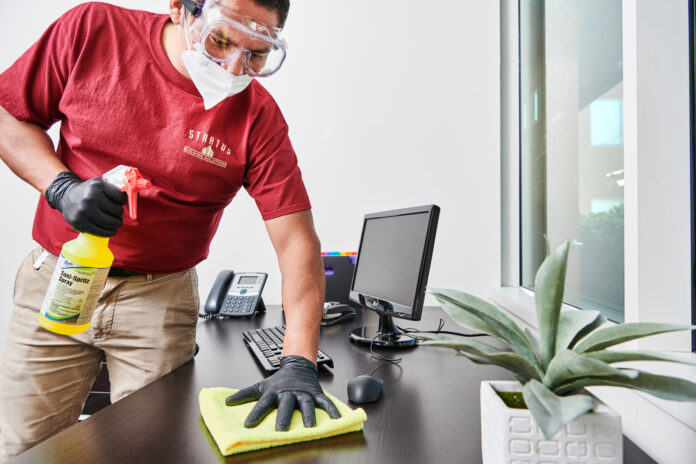In the wake of global pandemics, many individuals and businesses are becoming increasingly aware of the importance of proper disinfection procedures. Disinfecting your office space can help avoid the spread of infectious diseases, reduce medical expenses, and keep those who work in or visit the office healthy.
Although there are a variety of cleaning services available that offer specialized disinfection protocols, there are some basic tips anyone can use to effectively fight germs in their workplace. This guide provides an introduction to effective disinfection in the office environment.
Benefits of Disinfecting the Office
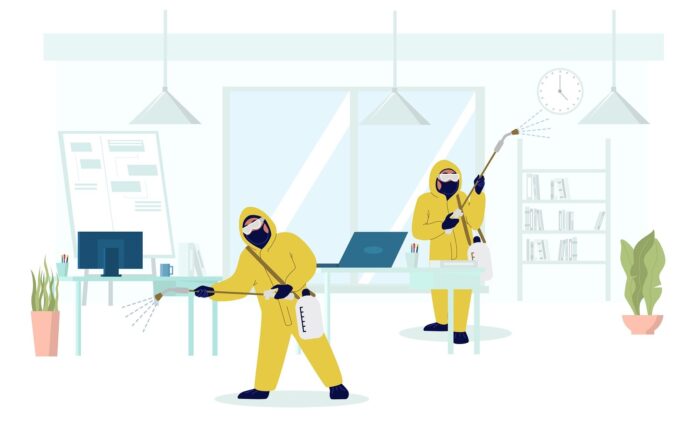
For employers, one benefit is that regular disinfection can help reduce lost production time due to sick days and employee absences. Disinfecting can also ensure that surfaces are kept clean which can prevent cross-contamination when handling food, files, or products.
By having a reliable system for disinfecting practices, employers are able to provide their customers with a more pleasant experience in their offices which can increase customer satisfaction and promote good reviews within the business community.
For employees as well, communicating regularly about office cleaning and disinfecting improves morale as it shows how seriously the organization takes a healthy work environment. This leads to healthier lifestyle choices, such as washing hands often or cleaning up after meals that may have been brought into the office kitchen area.
Additionally providing employees with access to safe products helps them stay productive throughout their working hours by reducing illnesses associated with shared workspace environments.
On top of all this, using professional-grade cleaning products helps maintain a positive first impression for any visitors who may be looking around in the workplace or engaging in employee interviews on-site while eliminating unpleasant odors lingering in hallways or offices.
Types of Disinfectants Used
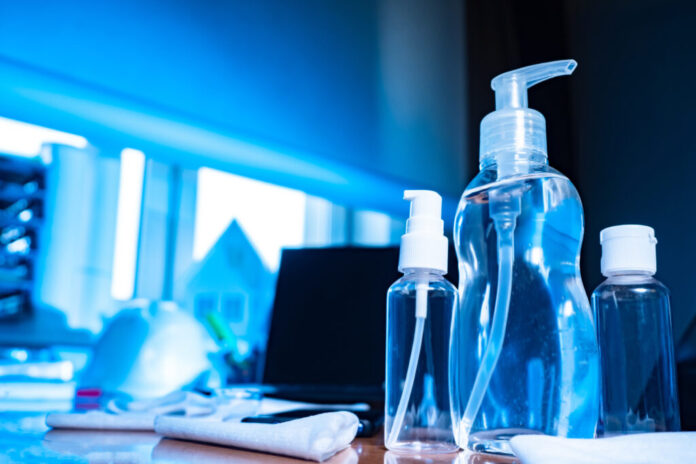
Most commonly used disinfectants can be divided into four primary types: Alcohols, Quaternary Ammonium Compounds (also known as Quats), Oxidizing Agents (such as hydrogen peroxide or chlorine dioxide), and Phenolic Compounds. Each type of cleaning product offers different benefits and levels of effectiveness on various surfaces, depending on their concentration and formulation. Let’s take a look at each one:
Alcohols: These products have been used for decades to combat germs in a wide variety of applications. The most common alcohol-based products contain either ethanol or isopropanol and are usually effective against many bacteria types with no toxicity concerns for humans. Alcohols can evaporate more quickly than other types of products however so they must be reapplied regularly throughout the day or from the surface-to-surface cleaning process.
Quaternary Ammonium Compounds (Quats): These compounds are widely used due to their broad antimicrobial efficacy along with their ability to combat nosocomial infections caused by antibiotic-resistant organisms like MRSA or VRE. Quats are also easy on surfaces so they do not damage furniture over time with repeated use. They may require more contact time with infected surfaces than some other disinfectants however so care should be taken when selecting which product is best suited for any particular job.
Oxidizing Agents: Many professional-grade cleansers contain oxidizing agents such as Hydrogen Peroxide or Chlorine Dioxide which are effective against both bacterial and viral contamination when applied correctly according to directions on packaging labels. Oxidizing agents tend to eliminate odors effectively but may leave a residue that needs careful wiping off before they can be used safely by human employees again so this fact needs to be taken into account before use.
Phenolic Compounds: For many years phenolics were primarily associated with industrial cleaning but today they have been reformulated in lower concentrations for home use due to their strong effects against fungi & mold spores often found in commercial settings like restaurants & warehouses where food storage & handling occur frequently. They offer good shelf life stability even after dilution as well as meaningful cost savings compared to similar products elsewhere making them very attractive options for businesses seeking affordable ways to keep staff & clients safe from infection.
Steps for Disinfecting the Office
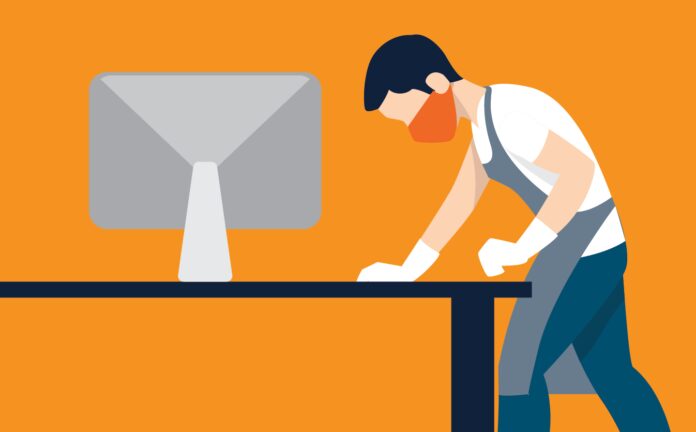
There are several key steps that employers should take in order to effectively disinfect the office, such as:
- Clean up any visible dirt, dust, and debris from surfaces such as desks, countertops, and chairs.
- Select the most appropriate cleaning product to use on surfaces, such as a disinfectant spray or wipes that contain ethanol, isopropanol, or bleach as active ingredients. These substances help to kill bacteria and viruses on contact.
- Allow plenty of time for the cleaning products to dry completely before using any surface or returning it to normal use.
- Dispose of used paper towels, wipes, and any other cleaning products into separate bins for disposal outside the office building to maintain its cleanliness within the facility.
- Keep a log of the frequency of high-touch surfaces cleaned in order to monitor progress throughout the day and week.
- Wear protective gloves and face masks while you clean these areas in order to protect yourself from germs that may be present at these frequently touched locations such as doorknobs and light switches-also consider wearing glasses if there is a risk that splashing can occur during cleaning activities (for example when using water).
Tips and Tricks

Cleanliness is the best form of preventative medicine, and disinfecting the office space should be a top priority to help maintain employee health and safety. Whether you use a professional cleaning company or disinfect it yourself, follow these tips to keep your environment safe and germ-free.
-Choose the right product: In order to accurately eliminate germs and other harmful bacteria, all surfaces must be suitably cleaned with the right products. Ensure that any cleaners you use are approved for the level of disinfection required.
-Pay attention to touch points: All high-contact surfaces such as doorknobs, keyboards, light switches, and telephones should receive extra attention during cleaning procedures.
-Wash your hands often: Good hygiene is essential for reducing germs, so make sure employees wash their hands thoroughly after work or after using restroom facilities. Provide hand sanitizer in areas where handwashing isn’t an option and promote its use throughout each day.
-Clean hard-to-reach areas: Dust can accumulate on ceiling corners or behind heavy furniture, making it difficult to clean properly with conventional cleaning solutions alone. Invest in dusters, ladders, or vacuums with attachments specifically designed to reach those harder spots for more effective sanitation results.
-Schedule regular office deep cleans: A deep clean may not always be necessary but will ensure that all nooks and crannies have been adequately sanitized using the correct products. Scheduling a professional deep cleaning company every 3 months will help maintain your healthy work environment year-round.
Conclusion
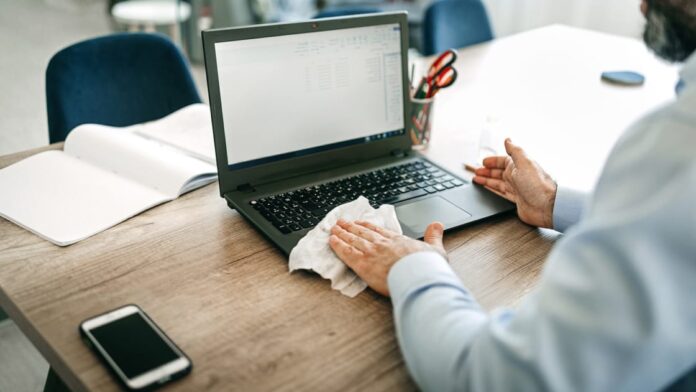
In conclusion, disinfecting the office is an important part of creating a safe and healthy work environment. While it’s not always possible to prevent the spread of germs, there are some simple steps you can take to reduce the chances of contamination. These include regularly cleaning surfaces with an effective disinfectant, providing hand sanitizer to employees and visitors, and educating staff members on proper hygiene practices. While the process may seem daunting at first, it’s ultimately worth it for ensuring that everyone in your office is able to stay safe and healthy.
